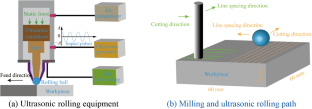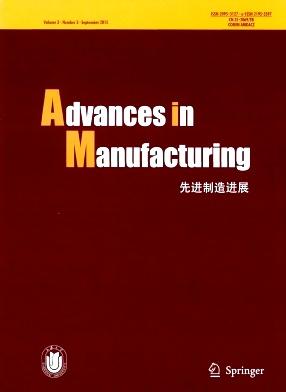Ultrasonic rolling is an advanced non-cutting surface strengthening method that combines traditional rolling with ultrasonic vibration. In this research, the experiment of orthogonal end milling-ultrasonic rolling composite process has been carried out. The surface integrity refactoring changes and its mechanism of Ti-17 titanium alloy during the milling- ultrasonic rolling composite process has been studied and analyzed by the test and analysis of the surface geometric characteristics, residual stress, microhardness and microstructure before and after ultrasonic rolling. The residual stress and microhardness gradient distribution were characterized by cosine decay function and exponential decay function. All indicators of surface integrity were significantly improved after ultrasonic rolling. The study demonstrates that the reduction effect of the surface roughness by ultrasonic rolling process is inversely proportional to the initial surface roughness value. The ultrasonic rolling can only change the distribution form of the surface topography when the initial surface roughness is small. In addition, the improvement effect of ultrasonic rolling on surface compressive residual stress and microhardness decreased with the increase of initial milled surface roughness and surface compressive residual stress due to the factors such as energy absorption efficiency and mechanical properties changes of surface materials. A better ultrasonic rolled surface can be obtained by controlling the roughness and residual compressive stress of the initial milling surface to a small level.



